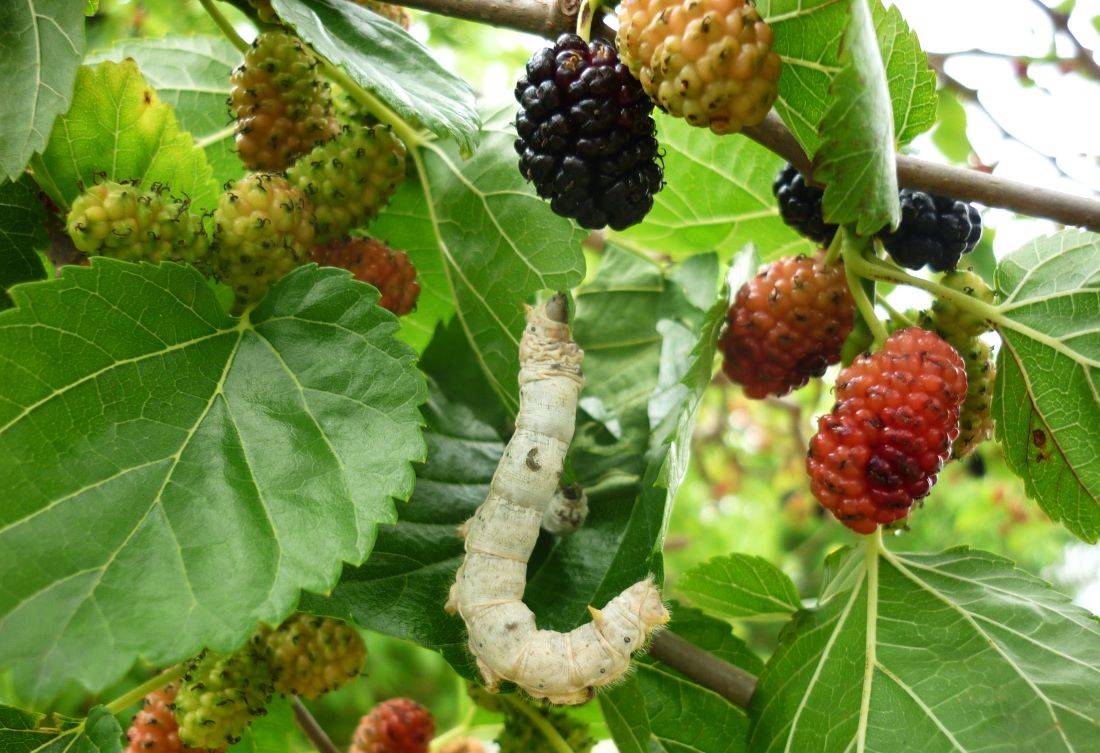
The J&K government is developing a comprehensive plan to revitalize the sericulture sector throughout the Union Territory. The administration is creating a futuristic roadmap for the thorough and unified development of agriculture and related industries.
An apex committee led by Dr. Mangala Rai, a former director general of the Indian Council of Agricultural Research (ICAR), offered suggestions for an ecosystem that will benefit farmers and the economy. To revive the industry, the government is expanding the mulberry plantations to ensure a supply of silkworm leaves. The Forest Department and the Sericulture Department are collaborating to create market infrastructures to assist cocoon producers in making a profit from selling their goods. In addition to creating jobs, the main goal is to restore Kashmir silk's former glory and originality and inventiveness, which are the hallmarks of all J&K crafts.
The government provides the necessary infrastructure, training, technology inputs, and IT tools. Mulberry trees and silk are mentioned in the Rajtarangini, and references in the Mahabharata and the Ramayana confirm that silk production was a significant industry in the area. According to ancient Sanskrit literature, the original home of silk is J&K! Kashmir silk, which had gained international recognition and was famous throughout Europe by the 1860s.
The closure of Resham Khana, one of the world's largest and oldest silk factories, in Srinagar in 1989 due to escalating political unrest had an adverse impact on the working class and the local economy. The city's Bemina Silk factories and additional Rajbagh factories were both haunted. The industry could not keep up with the political unrest, encroachment on agricultural land by parties with vested interests, an unregulated public sector, and widespread corruption after militancy emerged in the early 1990s.
All industries, including sericulture, were put on hold by the previous administration until it was almost too late. The Prime Minister introduced The Silk Samagra Yojana in 2017–2018, integrating J&K's sericulture industry with that of the rest of the nation. Due to the information and trade secret exchange that was made possible, Kashmir is what it is today.
The Center injected money and provided water to Sericulture when no one had faith in it. The amount of revolving funds have increased by the UT government from Rs 70 lakh to Rs 3.5 crore. Under Silk Samagra Phase-II, the Central Silk Board has given J&K a grant of Rs 35 crore. The Board will increase funding as more farmers sign up for the party. KVKs are enlisted as intermediaries, facilitators, and agents between the government and the rearers.
The College of Temperate Sericulture at Sher-e-Kashmir University of Agricultural Sciences and Technology of Kashmir, Mirgund, launched its innovative "Entrepreneurship Development in Sericulture" programme in the second week of November with funding from the Ministry of Micro, Small and Medium Enterprises (MSME). This year, 200 tribal farmers participated in a pilot test at 20 locations in the Tehsil Uri and Lolab where they received on-the-spot instruction in building inexpensive Rearing Huts and the scientific method of silkworm rearing for 40 days.
After crops were harvested from these huts, there was a 45% increase in productivity and a 25% increase in quality. The outcomes have inspired rural families in the districts of Kupwara and Baramulla to take this profession more seriously. Silk rearing has a short cycle (15 days) and offers quick returns, making it one of the fastest ways to make money. Silkworms can grow without expensive machinery or expansive lands. Producers of silkworm seeds, farmers and rearers, reelers, twisters, weavers, spinners of waste silk, traders, etc., benefit from the sericulture sector. More than 30,000 families currently participate in this value chain.
At Kashmir's Pampore, one of the top three centres in India for research and development, training, technology transfer, and IT intervention has been established. Pampore has created high-yielding hybrid silkworms to boost farmers' income. The typical yield of bivoltine cocoons has significantly increased in recent years. A camp to raise awareness about "Opportunities of sericulture in Gurez valley" was held on October 24 by the College of Temperate Sericulture in association with Krishi Vigyan Kendra (KVK) - Gurez and the Department of Sericulture.
The chosen farmers in Gurez received a unique variety of Mulberry saplings with a success rate of over 70% and were suitable for temperate climatic conditions. Sericulture is the ideal industry for remote villages, especially those cut off during the winter, as it allows workers to conduct their business from the comfort of their homes.
The project's incubation centres will aid in the dissemination of up-to-date information and technology on silkworm rearing and cocoon production to readers, the economic empowerment of women, the capacity-building of and improvement of rearing abilities through training programs, and the production of enough silkworm pupae meal, the worms' protein-rich food. The average person will benefit most from J&K's gold-spinning in the upcoming years.
















